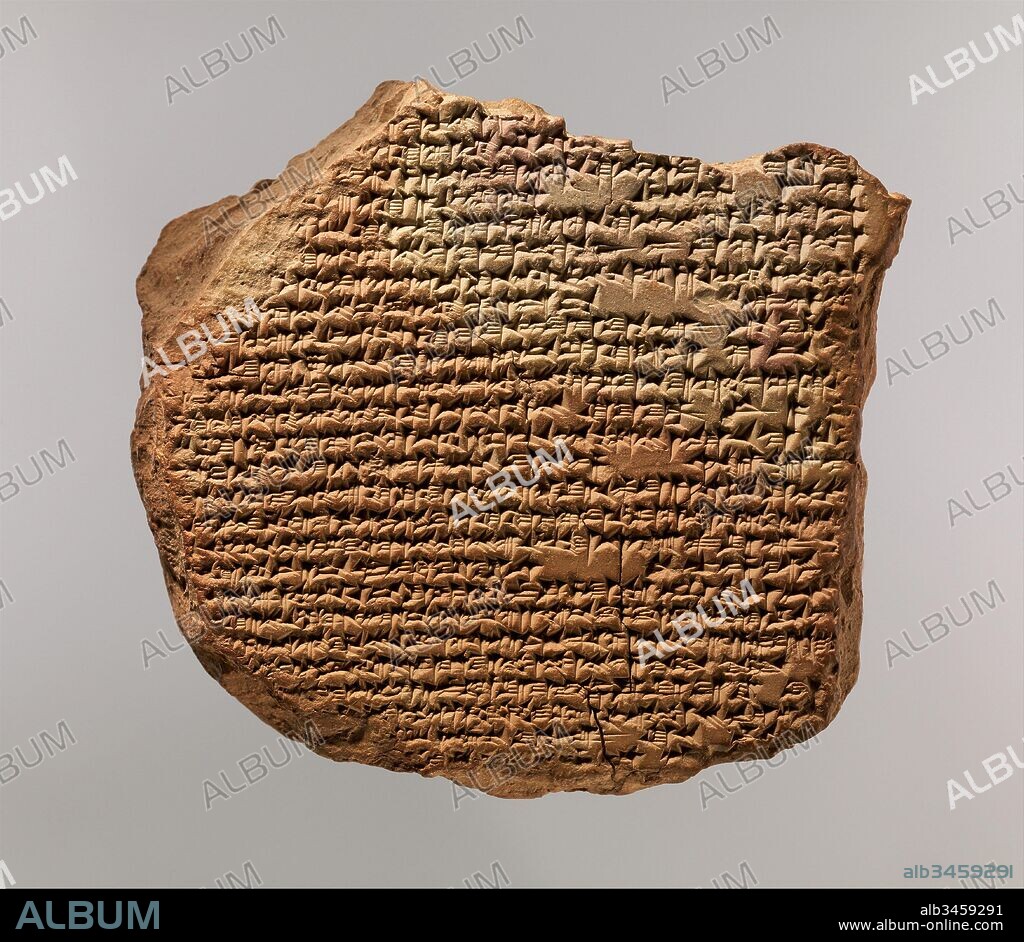alb3459291
Cuneiform tablet: hymn to Marduk, Neo-Babylonian (?), 1st millennium B.C., Mesopotamia, Babylonian (?), Clay, 3 1/2 x 3 7/8 x 1 1/8 in. (9 x 9.8 x 2.9 cm), Clay-Tablets-Inscribed, The god Marduk first became an important god in the early second millennium B.C., when Babylon (under its most famous king, Hammurabi) became the capital city of a large Babylonian state. Marduk’s importance in the pantheon of gods rose with the fame of the city of Babylon, so that in later periods he was the supreme deity.

|
Ajouter à une autre Lightbox |
|
Ajouter à une autre Lightbox |



Avez-vous déjà un compte? S'identifier
Vous n'avez pas de compte ? S'inscrire
Acheter cette image

Légende:
Voir la traduction automatique
Cuneiform tablet: hymn to Marduk, Neo-Babylonian (?), 1st millennium B.C., Mesopotamia, Babylonian (?), Clay, 3 1/2 x 3 7/8 x 1 1/8 in. (9 x 9.8 x 2.9 cm), Clay-Tablets-Inscribed, The god Marduk first became an important god in the early second millennium B.C., when Babylon (under its most famous king, Hammurabi) became the capital city of a large Babylonian state. Marduk’s importance in the pantheon of gods rose with the fame of the city of Babylon, so that in later periods he was the supreme deity
Personnalités:
Crédit:
Album / quintlox
Autorisations:
Modèle: Non - Propriété: Non
Questions sur les droits?
Questions sur les droits?
Taille de l'image:
4684 x 4067 px | 54.5 MB
Taille d'impression:
39.7 x 34.4 cm | 15.6 x 13.6 in (300 dpi)
Mots clés:
ANT. OR.: MESOPOTAMIE • ARGILE • BABYLONE • CELEBRITE • CITE • DIEU • DIEUX • EPOQUE NEO-BABYLONIENNE • GLOIRE • MÉSOPOTAMIE • MESOPOTAMIE, ANT. OR. • PREMIERE FOIS • VILE • VILLE
 Pinterest
Pinterest Twitter
Twitter Facebook
Facebook Copier le lien
Copier le lien Email
Email
